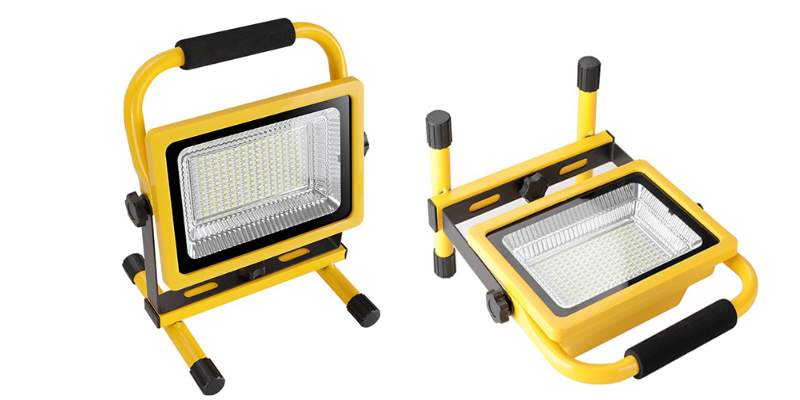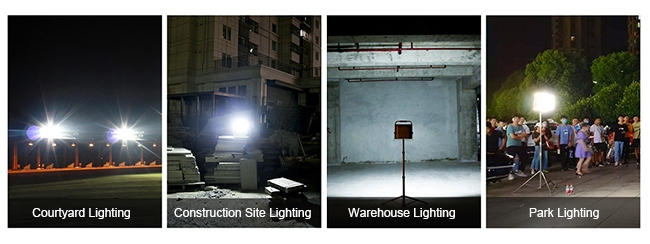In both professional and personal settings, having the right lighting is crucial for completing tasks efficiently and safely. A work light, specifically designed for these purposes, is a versatile and powerful lighting solution that ensures optimal visibility in challenging or poorly lit environments. Whether you're a construction worker, a DIY enthusiast, or someone who enjoys outdoor adventures, a work light can make all the difference. These lights are engineered to offer superior brightness, durability, and portability, making them ideal for various applications where traditional lighting might fall short. And in this blog, you'll get a full look at this product on the TOOL website!
Key Features of Work Lights

Work lights come with a range of features that distinguish them from standard household lighting. The most important characteristic is their brightness, usually measured in lumens. Compared to regular lights, work lights produce a much higher lumen output, ensuring that the area you're working in is adequately lit. This makes them particularly useful in environments with low light, such as construction sites, basements, or workshops. Many modern work lights also allow users to adjust the brightness to suit different tasks, offering flexibility for everything from delicate jobs to large-scale operations.
Another notable feature is the durability of work lights. These lights are built to withstand rough handling and tough environments. Most work lights are designed with rugged materials like aluminum, steel, or durable plastic to ensure they can endure drops, impacts, and harsh conditions. If you're using the light outdoors or in wet environments, it’s essential to choose a model with an IP rating (Ingress Protection) that indicates its resistance to dust and water. Many work lights come with waterproof or water-resistant ratings, making them ideal for use in the rain or damp conditions.
Work lights are also available with different power options. While some models are rechargeable, others use disposable batteries or can be plugged directly into an electrical outlet. Rechargeable work lights offer added convenience, allowing you to use them without worrying about replacing batteries frequently. On the other hand, corded models are better suited for prolonged usage in fixed locations, where the need for portability is minimal.
How to Choose the Right Work Light
Selecting the right work light depends largely on your specific needs. Here are a few key factors to consider:
-
Brightness & Lumens
The first thing to evaluate is how much light you need. The lumen output will determine how bright the work light is, and selecting the right level will depend on the task at hand. For example, if you're working in a large, dark space, such as a construction site, you'll want a work light with a high lumen output to ensure sufficient coverage. A light producing anywhere from 1,000 to 3,000 lumens might be ideal for larger spaces, while smaller tasks or tight areas could be illuminated with lights in the 300 to 1,000-lumen range. -
Portability & Weight
If you need to move the light from one place to another or transport it regularly, portability becomes an important factor. Lightweight, rechargeable, and compact work lights are great for carrying around or for use in more confined spaces. However, if you’re working in a fixed location, a larger, heavier work light may provide the stability and extended run-time required for your project. -
Power Source
The power source of the light should align with how you plan to use it. Battery-powered work lights are perfect for those who need mobility and want to avoid cords, especially in areas without electrical outlets. Corded work lights, on the other hand, provide uninterrupted power and are suitable for projects where a constant, high-intensity light is required. If you're working on a project that demands long working hours, rechargeable models can offer a balance between portability and extended usage. -
Environment and Durability
Consider the type of environment you’ll be working in. Will you be outdoors, in damp conditions, or in a high-risk area where the light could be dropped or exposed to impact? For these situations, choose a work light that’s built to withstand rough handling. Lights with shock-resistant housings and high IP ratings (like IP65 or IP67) are essential for outdoor or industrial use. If you'll be working in the rain or in extremely dusty environments, ensure the light is weatherproof and can handle exposure to the elements.
Common Uses and Applications for Work Lights

Work lights are incredibly versatile, finding applications across a wide range of industries and activities. Here are some common scenarios where work lights are essential:
-
Construction & Industrial Work
On construction sites, work lights are indispensable for providing clear illumination in the early morning, late evening, or when working in dimly lit areas. Construction workers often use work lights to ensure that they can see clearly when building, welding, or performing other intricate tasks. Rugged, durable models are necessary here due to the harsh working conditions, with a high lumen output required to cover large areas. -
Home Improvement & DIY Projects
For home DIY enthusiasts or homeowners undertaking repairs, renovations, or crafts, a work light can be a game-changer. Whether you're painting, assembling furniture, wiring, or working in a basement or attic, a work light can provide the focused light needed to perform precise tasks safely. Compact, battery-operated models are a popular choice for small projects that require frequent repositioning. -
Outdoor Activities
Work lights are also great for outdoor adventures. Whether you're camping, hiking, or fishing, a portable work light can serve as an essential tool for setting up tents, cooking, or lighting the way during nighttime outdoor activities. Rechargeable models or those powered by solar energy are especially useful for prolonged trips, while their lightweight design makes them easy to carry. -
Automotive & Mechanical Work
Mechanics and automotive enthusiasts also benefit from work lights. These lights provide bright, focused illumination in dark engine bays, under vehicles, or when performing repairs on cars and motorcycles. A hands-free or adjustable work light is often preferred, allowing for more flexibility and focus on the task at hand.
Conclusion
Whether you're in construction, home improvement, outdoor activities, or automotive work, having the right work light can make your tasks safer, more efficient, and more comfortable. When selecting a work light, consider the brightness, portability, power source, and durability to ensure you pick a model that suits your needs. With the wide variety of options available, there’s a work light for nearly every application, and having the right one can significantly improve your work experience, regardless of the environment or project type.

